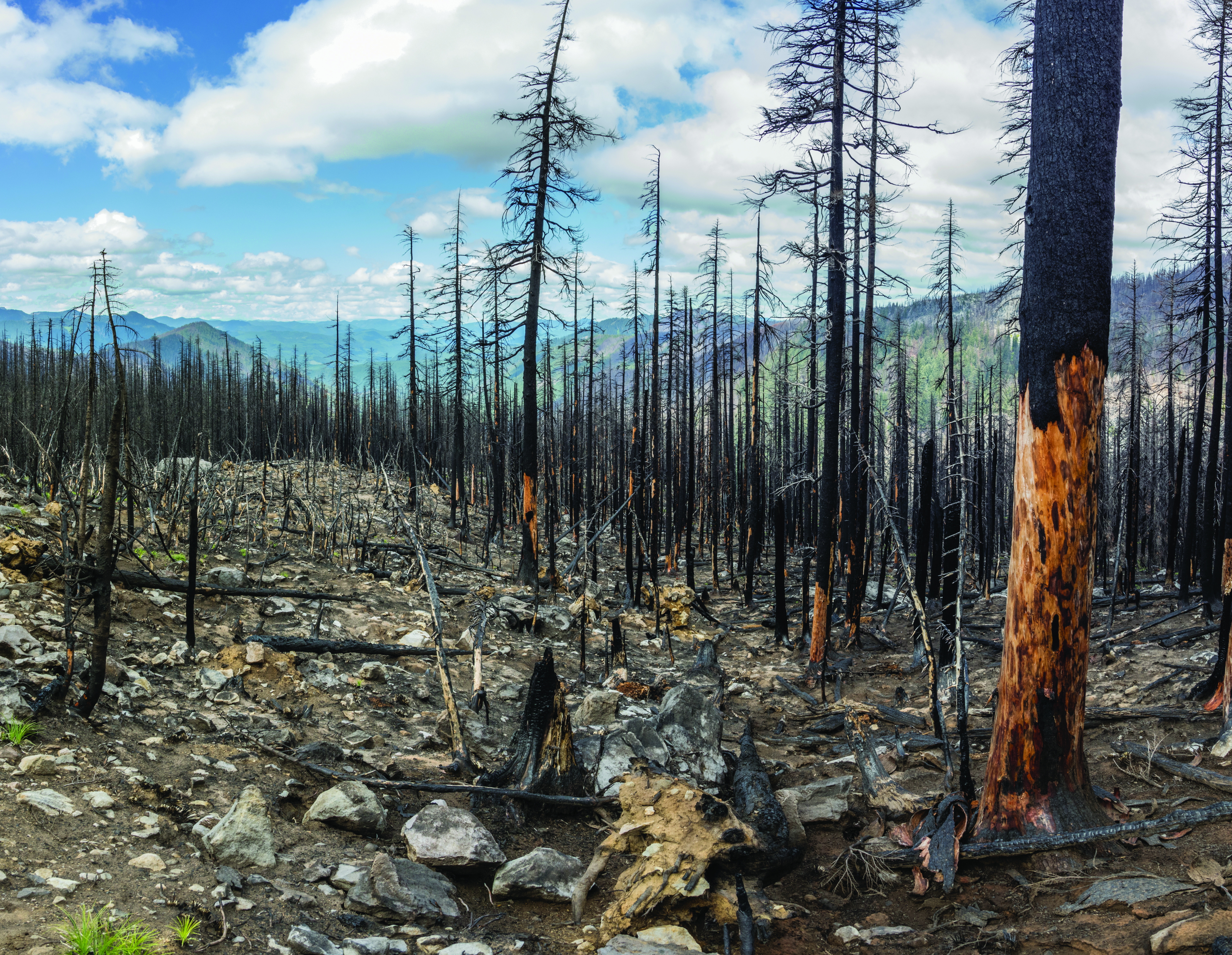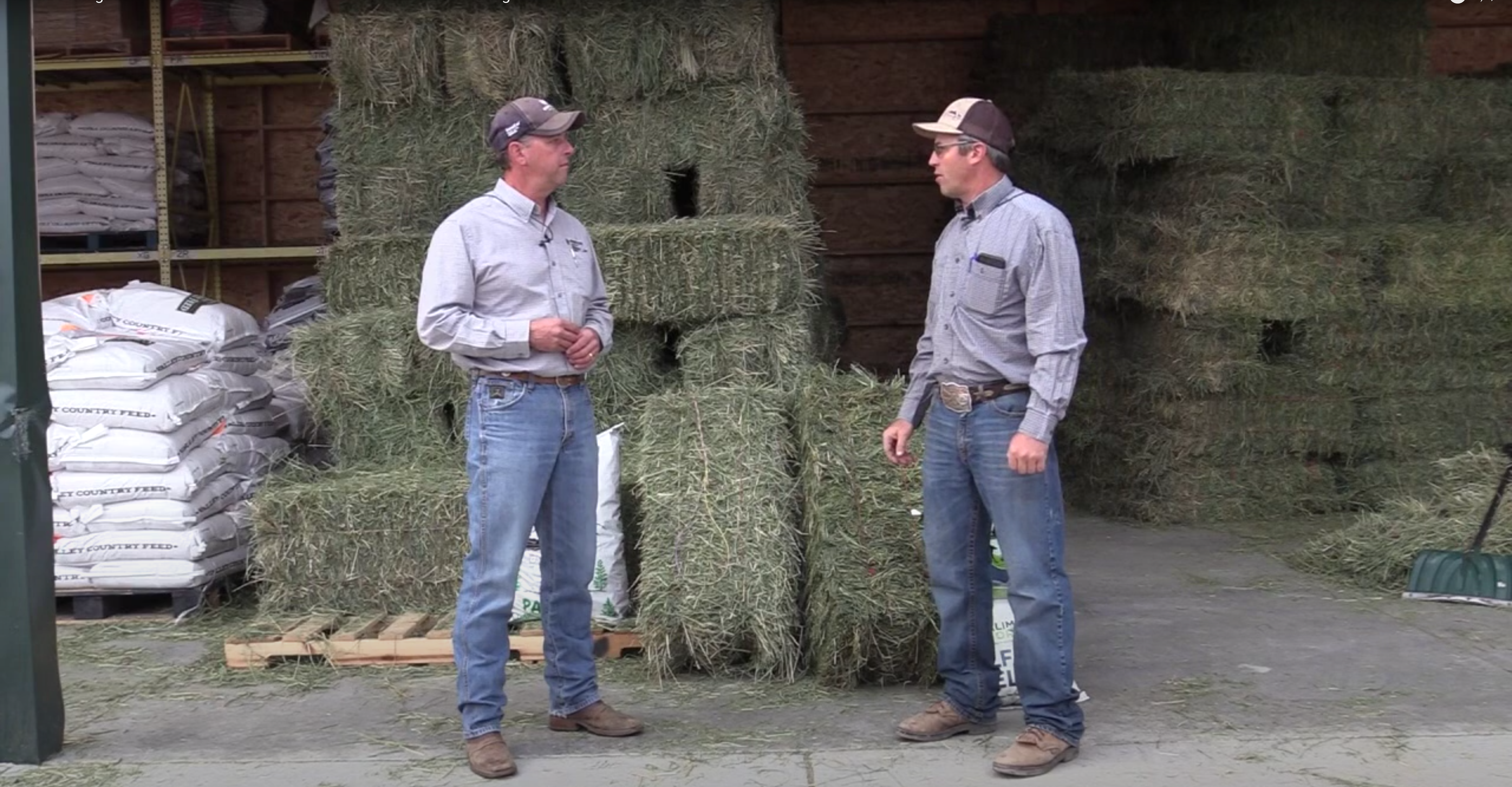Drought and fire risk
Drought is of course one of the biggest fire risks and one which land managers cannot control. Hot, dry conditions are increasingly common across the U.S., but most prevalent in the West. According to NOAA, at the end of 2021, “90.9% of the area [the West] was covered by moderate to exceptional drought,” with the hardest-hit regions extending from the Pacific Northwest to central Montana, and from California into the Great Basin. This pattern continued into 2022.1
Not only does drought create a landscape that’s easier to burn, it may also contribute to more invasive grasses. Researchers believe that ecosystem changes triggered by drought favor invasive plant species, which may be more flexible in their ability to exploit resources in the landscape.2 In one study that looked at the performance of invasives under controlled drought conditions, invasive species performed better in drought scenarios than when exposed to normal moisture, while populations of native perennials declined in dry conditions.2 With less competition from native species, drought-ready invasive plants thrive all the more. These species also tend to dry more quickly than native species, adding even more fuel to potential fires.
Invasive grasses may also cause challenges in increasingly drier forest areas. A recent study suggests that forests may be more vulnerable to grass invasion than land managers realize, and that some forest areas could even be at risk for turning into grass-dominated systems.3 As in open landscapes, more grasses mean more fuel for fires. When fire decreases forest land, it creates even more open spaces for invasive grasses to move in.3 The researchers also point out that even trusted mitigation practices, such as thinning and prescribed burns, can have this kind of unintended consequence in drought-stressed forest areas. Land managers need to ensure that tactics used for fire mitigation in the near term don’t create a greater fire risk down the line, especially in light of the changing pressures on ecosystems from climate shifts.3

A recent study suggests forests may be more vulnerable to invasive grasses than previously realized. Drought stress combined with fire mitigation practices that don’t nurture native vegetation can make forest areas more hospitable to invasive grasses, which in turn, increases fire risk.
Invasive annual grasses and fire risks
While wildfires have always had a natural role to play in landscape health, the reality is that, today, rangeland and forests are threatened by a whole new kind of fire—megafires. Megafires are driven by hotter and longer fire seasons, intense outbreaks of plant diseases and insects and human-caused ignitions.4 Notably, researchers also attribute megafires to “increased fuel accumulation due to decades of fire suppression,”4 indicating the need for better ways to manage lands against wildfires.
Invasive grasses and weeds have multiple physical characteristics that make them ideal fuel for these more intense wildfires. When invasive grasses spread into roadway areas, they pose a special risk, allowing vehicle fires to spread quickly and endanger the wider landscape. Invasive species also tend to grow much more quickly than beneficial native plants. In many cases, invasive winter annual grasses can grow larger and faster than even noxious weed species.
Controlling grasses, nurturing natives
Herbicides are often the go-to method for controlling invasive annual grasses, but not all herbicides are equal when it comes to creating a fire-resistant landscape for the long term. Less selective herbicides will control cheatgrasses and other invasives, but may also impact native, beneficial grasses and forbs. Herbicides that don’t offer lasting control may address invasive issues this season, but leave the door open to let them thrive the following year.
Milestone® herbicide is one herbicide option that provides a balanced approach to managing land challenged with invasive annual grasses. Milestone is used to control unwanted brush and weeds and is a compatible tank-mix partner to several grass-control herbicides, enabling control of brush, weeds and invasive grasses in one pass. With long-term residual control, Milestone also reduces the number of treatments needed. Registered as a Reduced Risk Pesticide by the EPA, Milestone gives land managers peace of mind. It can be used in wide range of locations, including seasonally dry wetlands, grazed areas and roadways. But, most importantly when looking at managing landscapes over the long term, Milestone is selective. It won’t harm most beneficial grasses and forbs, including most warm and cool-season perennial grasses. This helps improve grass sustainability and density and slow the re-invasion of invasive species.
Planning and patience
Land management has always been a long game, but today’s successful managers recognize they must act as generational stewards, looking ahead not just a few seasons, but 10 years or more into the future. Land doesn’t become damaged from invasives overnight, so it’s important for ranchers and land managers to understand that recovery and restoring the land to more native, beneficial vegetation will take multiple years. That makes it imperative to plan and take action now. Jake Zollinger is an agronomics manager at Valley Wide Cooperative and a rancher himself in Salmon, Idaho. He works closely with his customers on managing land against invasives. “The ranchers that are very successful are the ones that sit down and make a year-round plan, and they take advantage of programs and listen to other people,” he observed. “There are a lot of winter schools and resources provided here in Salmon that have been very educational.” This patience and planning pays off. “People who are proactive in making a management plan to control winter annuals or noxious weeds are very successful and it shows,” Zollinger said. “They get rewarded in other ways, whether it’s a premium for their livestock or their land value holds up significantly better.”

Corteva representative Trent Brusseau speaks with Jake Zollinger about steps ranchers are taking to mitigate fire risks in Salmon, Idaho.
That kind of planning is crucial to an integrated vegetative management (IVM) approach, which incorporates multiple management practices, including herbicides. When ranchers and land managers are facing invasive annual grasses and need to mitigate wildfire risks, selecting a herbicide that will maintain beneficial vegetation today and foster its return in the future can be a critical step in creating a more resilient landscape that benefits both the ecosystem and land owners.
For additional information about managing brush as part of wildfire prevention, download this technical guide.
References
1 “Annual 2022 Drought Report.” National Oceanic and Atmospheric Association National Centers for Environmental Information (NCE), January 12, 2023. https://www.ncei.noaa.gov/access/monitoring/monthly-report/drought/202213#overview.
2 Mojzes, Andrea et al. “Experimental Drought Indirectly Enhances the Individual Performance and the Abundance of an Invasive Annual Weed.” Oecologia 193, no. 3 (July 17, 2020): 571-581. Accessed February 13, 2023. https://doi.org/10.1007/s00442-020-04711-y.
3 Kerns, Becky. “Invasive Grasses Pose Previously Unrecognized Threat to Forests.” Pacific Northwest Research Station. U.S. Forest Service, April 9, 2020. https://www.fs.usda.gov/pnw/news-releases/invasivegrasses-pose-previously-unrecognized-threat-forests.
4 Kerns, Becky K. et al. “Invasive Grasses: A New Perfect Storm for Forested Ecosystems?” Forest Ecology and Management 463 (May 2020): 117995. Accessed February 13, 2023. https://doi.org/10.1016/j. foreco.2020.117985.
Milestone® has no grazing or haying restrictions for any class of livestock. When treating areas in and around roadside or utility rights-of-way that are or will be grazed, hayed or planted to forage, important label precautions apply regarding harvesting hay from treated sites, using manure from animals grazing on treated areas or rotating the treated area to sensitive crops. See the product label for details. Not all products are registered for use in all states. Contact your state pesticide regulatory agency to determine if a product is registered for sale or use in your state. Always read and follow label directions.


